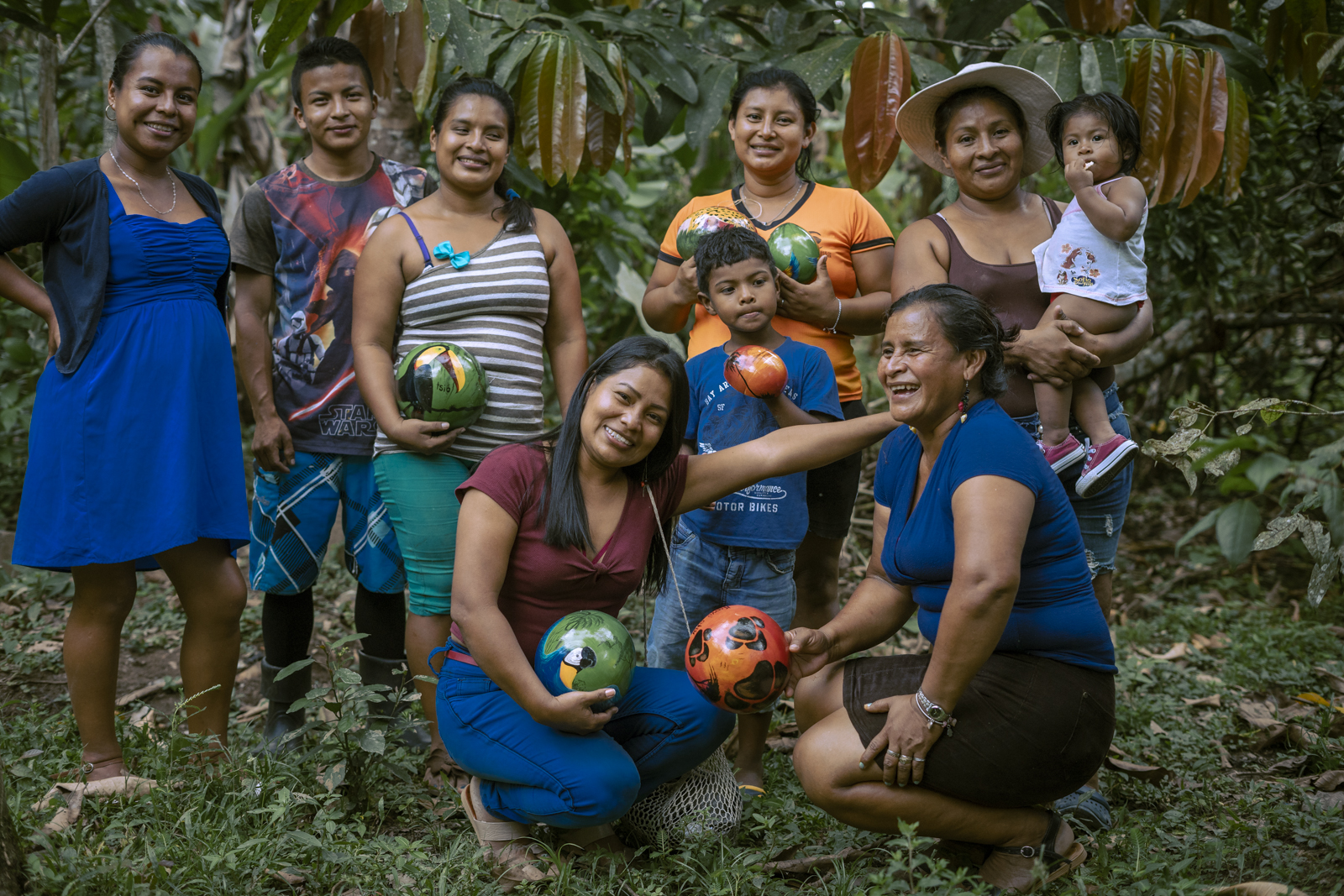Celebrating rural women’s roles in transforming food systems
October 12, 2023

The Asociación de Mujeres Indígenas del Territorio Cabécar Kábata Könana brings together Indigenous women in Costa Rica’s Talamanca region.
The International Day of Rural Women is a time to reflect upon and celebrate the essential role they play in human development, and in particular in producing the world’s food. This is critical for several reasons.
First, rural women comprise about 43 percent of the agricultural workforce but in developing countries are responsible for producing between 60 and 80 percent of all food. Despite their importance, they face significant gaps when it comes to access to land, crop insurance, credit and extension services, and even more significant disparities in income. Closing these gender gaps would not only increase global GDP by about US$1 trillion but would also reduce the number of people facing food insecurity by about 45 million.
Second, industrial agricultural practices are leading to groundwater depletion, erosion, and unprecedented land degradation. Worldwide, two out of every five hectares are degraded. Current practices in agriculture, forestry and land use account for about a quarter of all greenhouse gas emissions.
Third, the food system is facing systemic challenges which are reaching breaking point. United Nations Secretary-General Antonio Guterres recently tweeted “Global food systems are broken – and billions of people are paying the price.” According to the latest UN reports, almost three billion people do not have consistent access to nutritious foods, and almost 800 million face critical food insecurity. This will require profound changes in how we produce food.
The Equator Initiative, a partnership that UNDP has led since 2002, has long honoured the important role of rural women in solving the many dimensions of the food crisis. They comprise nearly one in five of all Equator Prize winners. These communities showcase several major transformative trends.
Promoting genetic diversity
Although there are more than 300,000 edible plants that we know of, nine out of every 10 calories we eat come from just 15 plants, and two out of three are from rice, corn and wheat. Genetic diversity has greatly diminished in recent decades through the expanded use of genetically modified organisms and industrial food production systems that favour uniformity. Citing a radical simplification in gene diversity in crops such as corn, wheat and potatoes, a recent article in The Guardian newspaper highlights how the loss of crop and genetic diversity leaves us all more vulnerable to climate breakdown, and why maintaining this diversity is essential.
Many Equator Prize winners illustrate how rural women are strengthening climate resilience and adaptation through crop and genetic diversity. Three examples include Zenab for Women in Development, a 3,000-strong grassroots union in Sudan that supports the cultivation of drought-resilient crop varieties, including sorghum; the Deccan Development Society in India, a group of more than 2,700 women farmers who are growing genetically diverse millet varieties to strengthen drought resistance; and the Ixpiyakok Women's Association in Guatemala, which promotes the cultivation of native heirloom species, including chili peppers.
Improving nutrition and carbon sequestration
Agroforestry is one of the most effective solutions to the climate crisis. It has the ability to sequester as much as 24 gigatons of carbon dioxide equivalent through 2050. Equally important, agroforestry packs a punch in both increasing household nutrition and diversifying and increasing household income. Similarly, regenerative agriculture is a recent shift that embraces soil health and regeneration, and has the potential to sequester as much as 23 gigatons of carbon dioxide equivalent through 2050 while also increasing nutrition and incomes.
Three examples of Equator Prize winners include the Asociación de Mujeres Indígenas del Territorio Cabécar Kábata Könana, an initiative that brings together Indigenous women in Costa Rica’s Talamanca region; the Swayam Shikshan Prayog initiative of 72,000 women in the drought-prone state of Maharashtra, India, which encourages traditional and regenerative agriculture practices to build soil fertility; and the Alianza Internacional de Reforestación, group with 2,100 Mayan women farmers in Guatemala practicing agroforestry to fight erosion, improve nutrition and bolster incomes.
The way forward
It is clear that rural women are not only essential to the global food system labour force, but more importantly are providing learning and leadership. We must champion them in tangible ways. UNDP’s recent policy brief on “Women as agents of change in greening agriculture” outlines some clear steps, including creating inclusive agricultural extension services; improving access to an array of agricultural infrastructure, credit, insurance and other services; eliminating gender discrimination and pay disparities; and strengthening land tenure laws.

 Locations
Locations